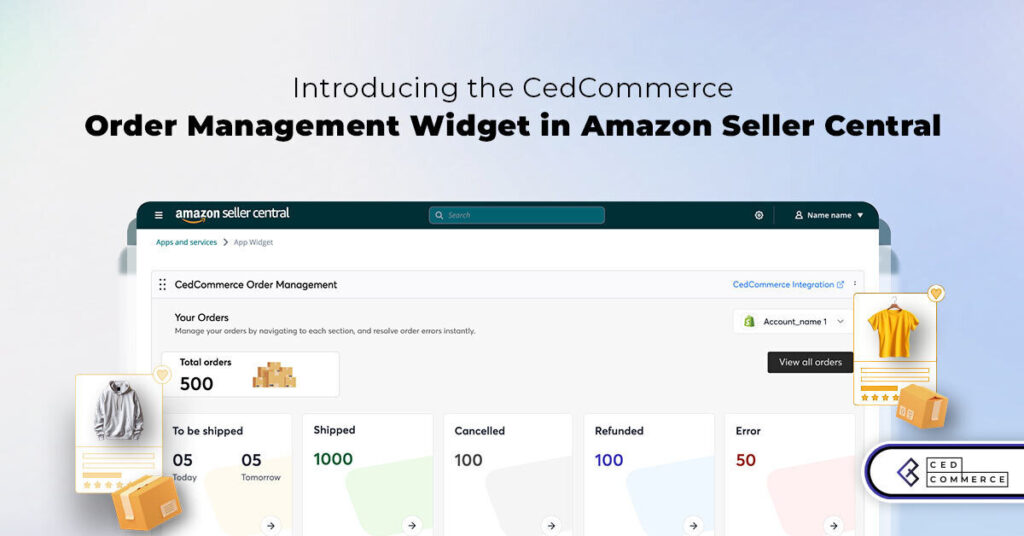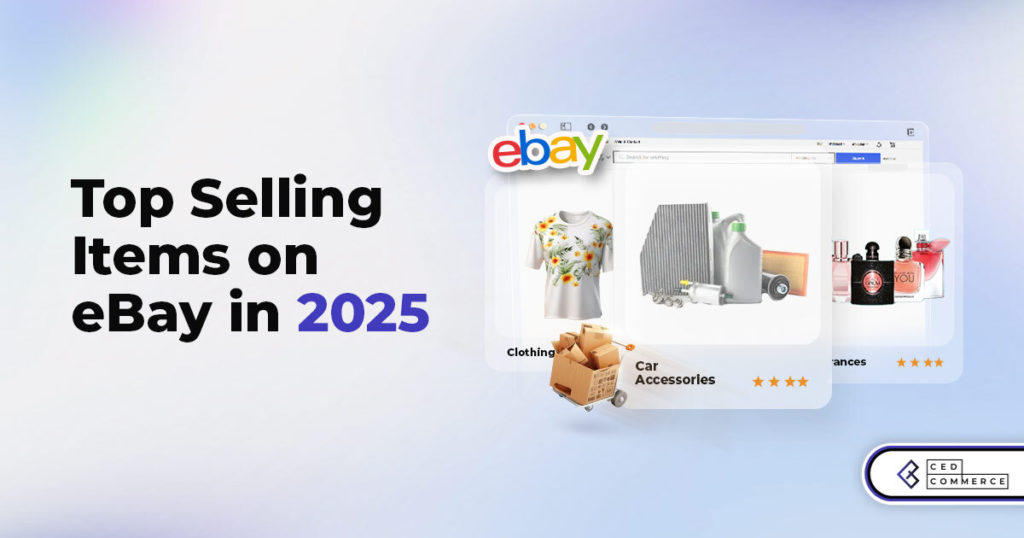Amazon Brand Registry Made Easy: Everything You Need to Know
With millions of sellers on Amazon, protecting your brand has never been more important. Counterfeit
Nowadays, businesses must invest in eCommerce to remain competitive. It allows you to reach out to more customers and adapt to their ever-changing demands. And with the countless software and tools available, both small and large businesses can start setting up their online stores.
However, running an eCommerce business also has its own challenges. With almost 2.05 billion digital buyers, managing orders and customer experience can be overwhelming. Not to mention, you have other responsibilities to think about such as marketing, accounting, monitoring inventories—the work never ends.
To make sure your eCommerce workflow remains efficient and effective, you should look into how to automate your eCommerce business. Using automation can change how you operate your business for the better. In fact, there are several benefits to automating your eCommerce workflow.
That said, here’s a quick overview of what you’ll be getting from an eCommerce automation.
You can use automation in different aspects of your eCommerce business. To name a few in an eCommerce automation checklist, it can perform tasks such as marketing, invoicing, and engaging with customers. This allows you to work on other value-adding tasks, increasing overall productivity in the process.
By reallocating certain responsibilities into your software, you can cut down 10% to 40% of your usual work time. Automation can process information and data faster than humans. Also, automated systems can work for prolonged periods without flagging down their performance.
Likewise, using automation means you don’t have to worry about hiring more employees. Your software itself can work and perform as efficiently as any human being. It might even be more productive in the long term, enabling you to save up costs on hiring, salary, and compensations.
Automation can do more than just administrative and repetitive tasks. With the rise of sophisticated technology such as artificial intelligence, your automation tools can also engage your customers. It can send emails, notifications, and instant messages in the form of chatbots.
Some eCommerce software like MageNative can automatically send emails and push notifications to your customers. For example, you can reduce cart abandonment by notifying customers of items they left on their cart.
Likewise, you can use automation to enhance and streamline your email marketing for better lead generation. It gathers customer contact details or data and uses it to inform them of your company’s latest products, promos, deals, and sales.
You can also automate communication using chatbots. It helps assist your visitors and answers important queries regarding your products and services. This way, you won’t miss out on opportunities without having to lift a finger.
Often, you have customers asking certain questions about your products. This includes stocks, prices, delivery charges and options, refunds, shipping statuses, and others. And while you can have this information readily available on your eCommerce platform or website, updating such information and making sure it’s accurate can be time-consuming.
Fortunately, you can use automation to maintain all your product information. It makes sure that all information Is accurate and instantly updates them for any changes.
In this way, your customers are constantly up to date with the current conditions or statuses of your products. You don’t have to manually check all this information and change what’s on your eCommerce store or site. Your eCommerce automation too will do the job for you.
Managing your inventory can be tricky. It requires your constant attention to make sure that everything is stocked right. Not to mention, you must take into account your warehouses, suppliers, and the transportation of your products to make sure that nothing is damaged.
With automation software, you can easily monitor and keep track of your inventory. It can run off each of your product’s unique SKU number for easier tracking. That means when one item has been bought, your automation software will instantly remove its SKU from your online inventory.
Likewise, it can update you on the locations and conditions of your products in real-time. This helps you avoid overselling, overstocking, or selling defective products to your customers in the process.
Committing mistakes is a natural part of being human. However, even simple errors can result in serious consequences for your business. This can mean disappointing a customer, missing out on opportunities, receiving negative reviews, and losing profit in the long run.
The good news is you can reduce the chances of committing such errors by incorporating workflow automation in eCommerce. It can eliminate usual human errors such as miscommunication, miscalculations, typos during manual data entry, misplaced items, and missing deadlines.
Having one less error in your processes also means optimizing your workflows and making it more efficient than ever. This lets you avoid bottlenecks at certain aspects of your eCommerce services. Likewise, it ensures that all transactions with your customers go smoothly and without delays.
As mentioned earlier, using automation does not only lessen workload and reduce work time and cost for your business. It can also optimize your e-commerce workflow diagram and create an efficient system for your online store. This, in turn, will ultimately improve your customers’ experiences with your eCommerce business and increase your online sales in the process.
With automation, you can cut down on waiting times, bottlenecks, product or stocking issues, and more. This ensures that your customers get the best experience possible with your company and maintain their satisfaction in the long run.
Furthermore, you can use automation to make sure that your customers are satisfied with your services. It can send out surveys or feedback forms to hear their opinions about your services. Likewise, this can help you find out which areas to improve and how best to serve your customers in the future.
To fully take advantage of eCommerce automation, you can integrate your software with other solutions. Doing so gives you access to other functions beyond what your current eCommerce software offers. Likewise, it gives a more streamlined and cohesive approach to running your entire business—not just your eCommerce store.
You can consider integrating your eCommerce automation with your customer relationship management (CRM) software, point of sale (POS) systems, fleet management software, and whatever other solutions you use in your daily business operations.
In this way, you can seamlessly work on one task to another without disrupting workflow. Not to mention, this makes it easier to transfer data between solutions without compromising its integrity in the process.
In an era where technology plays a huge role in people’s daily lives, your customers would expect instant, hassle-free services from you. After all, this is the generation who grew up with technology in their hands. Don’t let your business get behind with the times.
It isn’t enough that you just set up an online store. You would also need the right automation tools to ensure that your eCommerce workflows are efficient and effective. Likewise, knowing the basics of eCommerce software is essential. This helps you identify certain gaps you need to bridge in order to provide the best experiences for your customers. In this way, you can give more to them without having to work or spend more.

With millions of sellers on Amazon, protecting your brand has never been more important. Counterfeit

TikTok isn’t just setting trends anymore — it’s rewriting the playbook for performance marketing, creative

In a significant development for online retailers, Walmart has officially updated its policies to permit

Are you encountering issues with Amazon order management across various sales channels? If so, everyday

A Deep Dive into Selling Smart on TikTok Shop UK, TikTok Shop US, and TikTok

In a world where cross-border commerce fuels eCommerce growth, tariffs are no longer just policy

In the world of eCommerce, visibility is everything—and Walmart Marketplace is no exception. With thousands

In what comes as a major relief for TikTok and its millions of users in

In a move aimed at enhancing product quality and boosting buyer confidence, TikTok Shop has

Selling on Amazon offers immense opportunities, but one of the most crucial decisions sellers face

Amazon is doubling down on AI-driven selling tools, introducing a new AI-generated product enrichment pilot

With over 17.6 million sellers on eBay marketplace, cracking the code behind the top selling

Amazon is doubling down on artificial intelligence, introducing the AI-powered ‘Interests’ feature that automatically finds

U.S. President Donald Trump has hinted that a TikTok deal is on track before the

Nearly a decade after closing post its first attempt, Best Buy is returning to the

PrestaShop has long been a leading name in European eCommerce. With its flexibility, user-friendly interface,

In a significant move to improve merchant operations, Walmart has introduced “Wally,” a generative AI

TikTok Shop, the eCommerce division of the popular social media platform TikTok, is set to

Despite political scrutiny and regulatory challenges, TikTok Shop is thriving in the U.S., with American

Amazon is making history by extending its flagship summer sales event to four days in